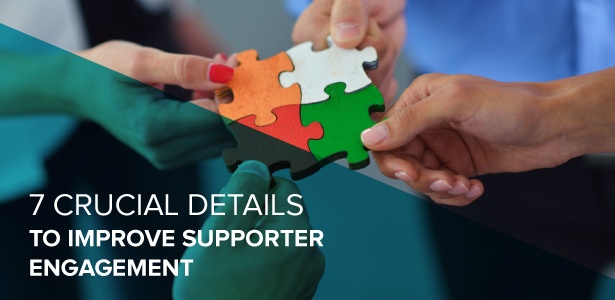
The relationship between your organization and its supporters is a beautiful, wonderful thing. They support your cause, and you use their support and trust to help improve your community.
Donors are a vital part of the nonprofit ecosystem, and deserve a pat on the back. So how can you be sure that you’re building the strongest relationship you can with them, and increase their engagement with your nonprofit in the meantime?
The secret lies within your donor database. The better you know your donors, the better you can support their engagement with your nonprofit’s events, volunteer opportunities, and fundraising campaigns.
So what are the most important donor details to keep track of within your donor database?
- Biographical and contact information.
- Preferred method of communication.
- Previous interactions with your nonprofit.
- Their RFM factor.
- Previous philanthropic behavior.
- Wealth indicators.
- Familial and personal information.
When documented and kept up-to-date, these data points can be leveraged to increase engagement and improve your nonprofit’s donor retention rates. Let’s dive in!

1. Biographical and contact information.
The first thing you learn when you make a new friend is their name, and it should be the same for your nonprofit! Biographical and contact information is crucial to a relationship with a donor because without it, you can’t contact them.
When you’re getting to know a donor, ask for the following information:
- Full name.
- Street address.
- Email address.
- Home or cell phone number.
This information is the foundation upon which you’ll build the relationship. And collecting this information doesn’t have to be difficult! Using online donation tools with pertinent fields can streamline the process because the information can flow directly into your donor database.
Is your online giving strategy up to par? If you’re having a hard time building relationships with online donors, it’s time to upgrade. Check out DonorSearch’s guide to the best online giving tools to learn about your options.
If you’re hosting an event, consider setting up kiosks or tablets where donors can make contributions as well as input their information. Your nonprofit wants to build donor profiles for all of your supporters, and this basic set of information is the perfect way to start.
Don’t forget to periodically update your information! Ask your donors if their contact information is still up-to-date at least once a year to make sure you can stay in touch with them.

2. Preferred method of communication.
Once you have the ability to reach your donors, you need to know how they like to be approached! Everyone is different, so pay attention to the methods they respond to best.
Your nonprofit can either analyze the donor’s behavior to determine how they like to communicate, or you can simply ask!
Different lifestyles encourage different communication methods as well, so make sure your nonprofit is able to reach out through various pathways like:
- A phone call to their home or cell phone.
- Direct mail to their home address.
- An email to their preferred email address (many people have more than one!).
- A text message to their smartphone.
If you listen to your donors’ preferences, they’ll be far more receptive to your communications. You might find some amazing donors hidden in your database once you’re reaching out through the right methods!
Don’t forget to keep track of preferred names, titles, and pronouns in your donor database as well as their preferred method of communication! Demonstrating to your donors that you listen and care is vital to a strong engagement.

3. Previous interactions with your nonprofit.
A very important part of strengthening donor relationships is ensuring that they feel as though their contributions are appreciated. Tracking every interaction that they have with your nonprofit is a surefire way to make sure that none of their support is forgotten.
Engaging with a nonprofit means more than just donating financially! Don’t forget to keep track of and acknowledge participation in things like:
- Volunteer opportunities.
- Fundraising events.
- Fun runs or other advocacy events.
- Peer-to-peer fundraising campaigns.
And, of course, keeping track of every donation that they’ve made is important to expressing your appreciation. Tailor your expressions of gratitude to reflect their level of engagement. You wouldn’t want to send a long-time supporter and a brand new donor the same thank-you message!
A bonus to keeping a tally of how many times someone who works for one of the top volunteer grant companies has volunteered for your organization is that you can encourage them to submit a grant request, so that they can help in more ways than one!
Different segments of your donor population, whether divided by gender, generation, marital status, or more, will engage with your organization in different ways. Make sure that you understand and appreciate all the ways that people give back!

Sarah Tedesco is the Executive Vice President of DonorSearch, a prospect research and wealth screening company that focuses on proven philanthropy. Sarah is responsible for managing the production and customer support department concerning client contract fulfillment, increasing retention rate and customer satisfaction. She collaborates with other team members on a variety of issues including sales, marketing and product development ideas.
